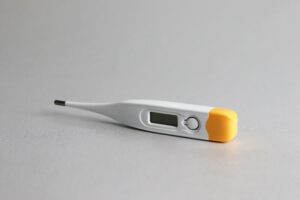Causes of Female Infertility – Infection


Genital and reproductive tract infections can increase the risk of infertility in both males and females, particularly if left untreated. The majority of infections leading to infertility are attributed to sexually-transmitted diseases (STDs) such as gonorrhoea, chlamydia, and syphilis.
Tubal Factor Infertility
In females, tubal factor infertility (TFI) accounts for 30% of female infertility in the United States and up to 85% of female infertility in sub-Saharan Africa. Most cases of TFI are due to salpingitis, which occurs as a result of upper genital tract infection.
Pelvic Inflammatory Disease
Pelvic Inflammatory Disease (PID) is a term used to define infection-induced inflammation of the upper genital tract; in females, this includes the uterus, fallopian tubes and the ovaries. It is usually caused by a bacterial infection spreading from the vagina or cervix. In approximately 25% of cases, PID is a direct consequence of untreated or unresolved STDs. In other cases, harmless vaginal bacteria can spread past the cervix, causing inflammation and infection. This is most likely if there has been damage to the cervix, for example, during a miscarriage or following insertion of an intrauterine contraceptive device. Approximately one in ten women with PID will experience difficulties conceiving, usually if they have delayed getting treatment or are suffering from recurrent episodes. In general, the rates of PID-induced infertility correlate with the severity of tubal damage, such that in severe cases of PID, infertility rates can be as high as 29%. The association of PID with infertility is thought to be due to a complex interplay of factors involving infection, inflammation and tissue repair. Women with untreated PID are also at increased risk of experiencing an ectopic pregnancy, due to scar damage and narrowing of the fallopian tubes. Once identified, PID can be easily managed with short-term antibiotic treatment. If not treated promptly there is an increased risk of abscesses developing in the fallopian tubes and ovaries. If this happens, in addition to antibiotics, surgical drainage may be required and the resultant scarring can have a long-term, detrimental effect on fertility.
Human Papillomavirus
Human Papillomavirus (HPV) is the most prevalent STD, but with the development of vaccinations against the highest risk strains of the virus, levels should start to fall. Usually when HPV is considered, people think of the low-risk variants, which give rise to genital warts, and the high-risk variants, which cause cervical cancer. A link between HPV and fertility has been less well studied. Certainly, HPV has been shown to impact male fertility, damaging sperm cells and reducing semen quality. However, a clear association between female fertility issues and presence of the virus is less well defined. It is thought that persistent HPV might prevent implantation, cause damage to a developing embryo, and increase the risk of premature membrane rupture or miscarriage. Another issue is that chronic HPV infection reduces the amount and quality of cervical discharge, which reduces the likelihood of successful sperm transport through the cervix to reach the egg. HPV can also have an indirect impact on female fertility due to its ability to transform healthy cells in the cervix into cancerous cells. Unfortunately, most treatments for cervical cancer will result in irreversible effects on fertility. The ideal way of protecting yourself from the damaging effects of HPV infection, including infertility, is to be vaccinated. Unfortunately, the vaccine is not yet available to all women and not all countries have incorporated it into their recommended vaccination schedule. Until this happens, the best form of protection is education; ensuring that all women are aware of the risks of HPV, and how to protect themselves.
Nabta is reshaping women’s healthcare. We support women with their personal health journeys, from everyday wellbeing to the uniquely female experiences of fertility, pregnancy, and menopause.
Get in touch if you have any questions about this article or any aspect of women’s health. We’re here for you.
Sources:
- Pavletic, A J, et al. “Infertility Following Pelvic Inflammatory Disease.” Infectious Diseases in Obstetrics and Gynecology, vol. 7, no. 3, 1999, pp. 145–152., doi:10.1155/S106474499900023X.
- Pellati, D, et al. “Genital Tract Infections and Infertility.” European Journal of Obstetrics, Gynecology and Reproductive Biology, vol. 140, no. 1, Sept. 2008, pp. 3–11., doi:10.1016/j.ejogrb.2008.03.009.
- “Pelvic Inflammatory Disease.” NHS, www.nhs.uk/conditions/pelvic-inflammatory-disease-pid/causes/.
- Pereira , N, et al. “Human Papillomavirus Infection, Infertility, and Assisted Reproductive Outcomes.” Journal of Pathogens, vol. 578423, 2015, doi:10.1155/2015/578423.
- Souho, T, et al. “Human Papillomavirus Infection and Fertility Alteration: a Systematic Review.” PLoS One, vol. 10, no. 5, 18 May 2015, p. e0126936., doi:10.1371/journal.pone.0126936.
- “What Are Some Possible Causes of Female Infertility? .” National Institutes of Health, www.nichd.nih.gov/health/topics/infertility/conditioninfo/causes/causes-female.













































